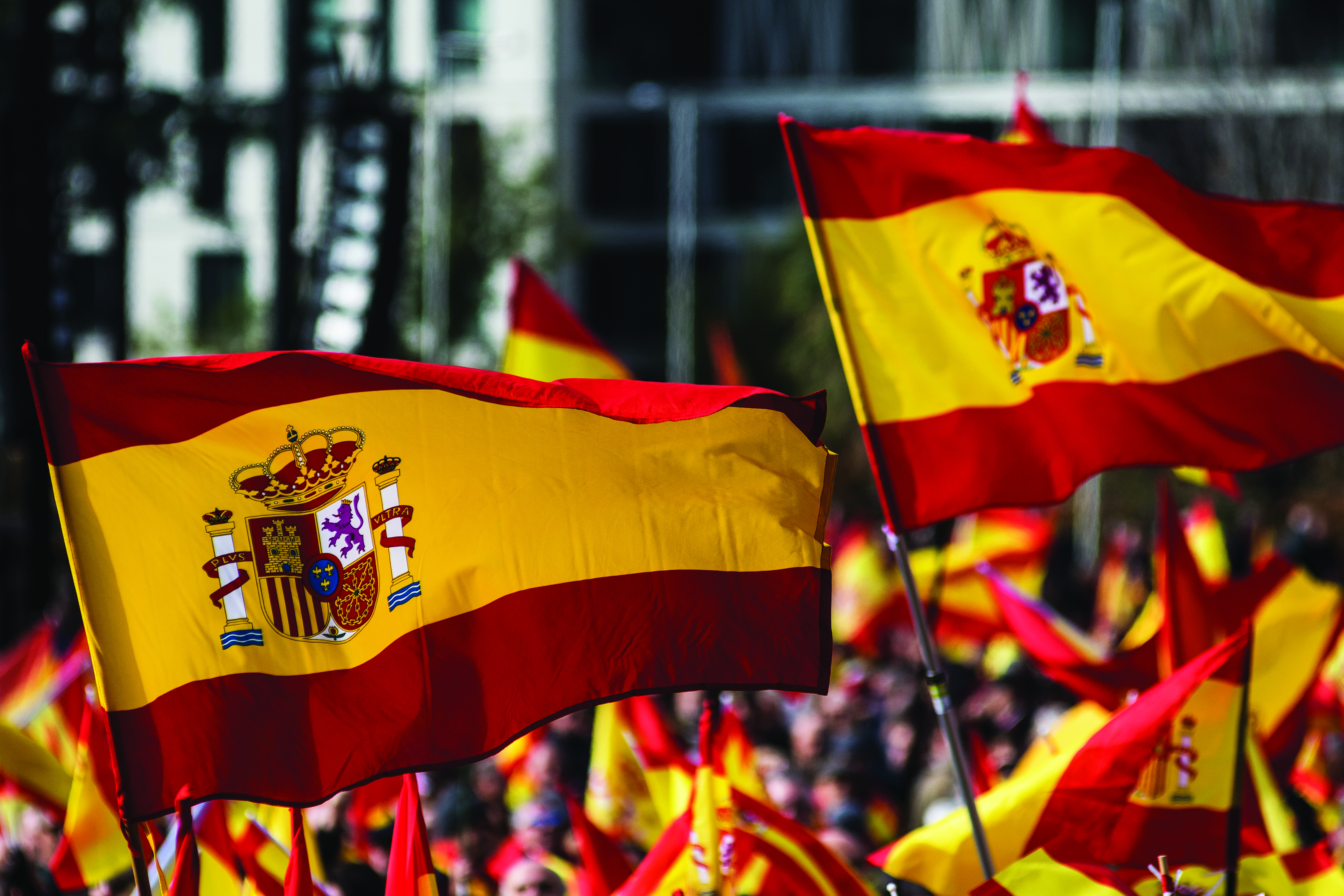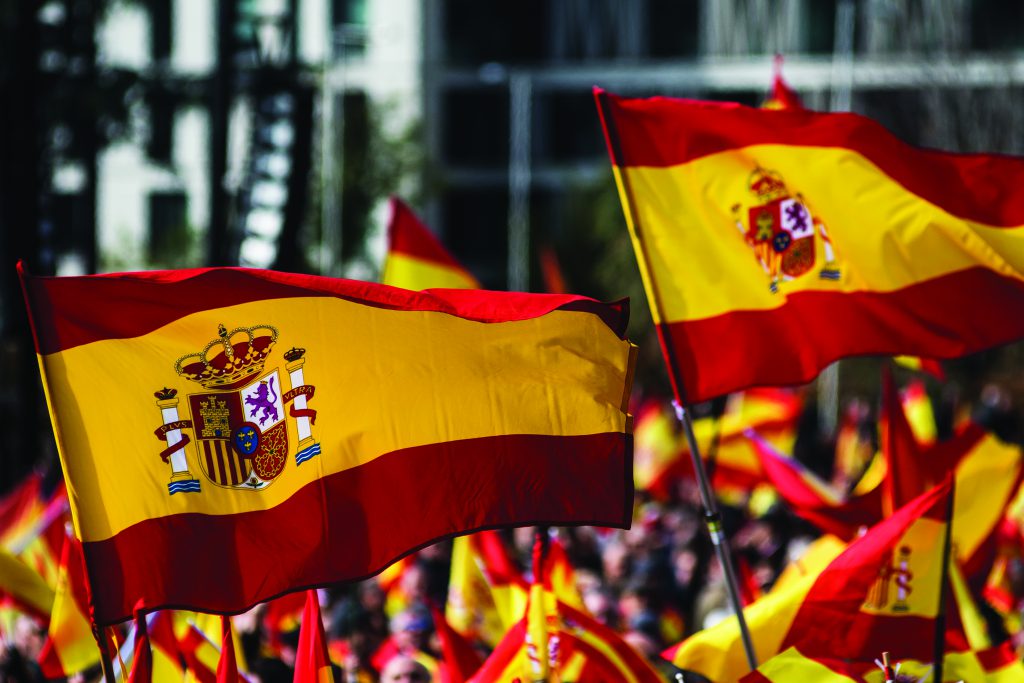The results of the elections in Spain, which took place for the third time in the last four years, reflected the trend which began there in 2015. Spain has moved away from the 38-year two-party era that characterized its politics since the first post-Francisco Franco elections, to a multi-party era.
The Left has split into two parties, and the Right into three. Like Israel, the biggest party in Spain is now significantly smaller than in the past and needs the favors and good will of many parties to form a coalition. The transition, for the electorate, of a relatively narrow strip of the center-Left to center-Right, not only promises a lack of stability and a problem of governance as a result of the difficulty of forming a coalition, but is also politically polarizing and so threatens to lead Spanish society to violence.

This split is mainly the result of two main processes. The first is the financial crisis of 2008-2014. Negative growth, rapid growth of the national debt and high rates of unemployment, especially among young people, gave birth to the Left-wing Podemos, in the spirit of Israel’s 2011 social protest which influenced Daphne Leaf, Stav Shaffir and their friends.
The second process was the result of minorities’ attempts (such as the Catalans and the Basques) to gain independence and in so doing, hurt Spain’s territorial unity. This process was seen by right-wingers as not having gotten a strong enough reaction from the conservative party in government. And so, two new parties were born: one is the Vox party, sometimes referred to as the extreme Right, and the other is the Citizens party which represents, essentially, Catalans who don’t want to separate from Spain. Today, it is the largest party in the Catalonian parliament. Political polarization has brought Spain to its lowest points in the past, and now the country will be forced to deal with those demons once again.
The “Reds” vs. the “Fascists”
The Spanish Civil War, which took place during the years 1936-1939, established two large camps across the political divide, each one comprised of several factions. The Spanish Left was united within the Republican framework, which was loyal to the Second Republic that was established in 1931 and called the “Reds” by their rightist opponents. They were joined by the anarchists and the communists.
The geographic support for the Republicans came from the Basque region, the Catalan region, and the southeast of Spain.
The Spanish Right relied on the Falange, Franco’s faction, the royalists and the Catholic church. Support for the Right came from the western regions of the country. They called themselves “the Nationalists”, and the Left called them “fascists”.
Behind each of these camps stood the superpowers – the Soviet Union and France on the Republican side and Nazi Germany and Fascist Italy on the Falangist side.
The war lasted two years and eight months and destroyed all of Spain, with nearly two million people dying as a result. Ultimately, the nationalist side was declared victorious, and Spain sank under Franco’s dictatorship for 36 years.
Chronicling political polarization
Spanish politics in the post-Franco era has tried to stay within the lines of two large parties, a center-right party and a center-left party. Over the course of the 11 elections that have happened in the years 1977-2011, the two large parties won between 81%-93% of the seats in parliament, and in five instances, one of the parties even won absolute majority and was able to form a government without having to enter into coalition with any other parties. But under the surface, political polarization was already taking root, on the way back to places Spain had hoped never to have to return to.

The conservative government that ruled Spain in 1996-2004 put the Iberian Peninsula country on a path of growth. The popularity of former Prime Minister Anzar was at its peak at the beginning of his second term. But then he made a decision which, to describe as unpopular, would be an understatement.
Spain was one of the countries that joined America’s ‘War on Terror’ in 2001 and sent forces to Afghanistan and Iraq. The Spanish public came out en masse to protest the war – in every opinion poll, opposition to the war was among the highest anywhere in the world at up to 90%.
The Socialist Workers’ Party, the biggest opposition party at that time, took advantage of that fact to run a campaign against Spanish presence in Afghanistan and Iraq. If that wasn’t enough, the biggest terror attack in Spain’s history and one of the largest in the history of Europe – killing 192 people in a series of explosions on a train in Madrid – took place three days before the 2004 elections.
The government tried to convince the public that the Basque underground was behind the terror attack. The reason for this false accusation was that the perpetrator of the attack was Al-Qaeda, which declared that it had done so in retaliation for Spanish involvement in the War on Terror. The government was ultimately seen as responsible for the attack and for trying to whitewash and lie to its people.
And so the socialists returned to power for seven years, during which time Spain experienced the worst financial crisis since the Civil War. The crisis in 2008 coincided with that of the rest of the Western countries but Spain, whose economy was tainted by corruption and particularly high public spending, was forced to take difficult measures, including painful cuts and accepting high-interest loans in order to remain afloat.
During the years of the conservative government, the national debt fell from 65 percent of the GDP to 45 percent, while in the midst of the financial crisis, the debt exceeded 100% of the GDP. This crisis further undermined Spanish society and a protest movement called M-15, named for the first demonstration that took place on the 15th of May in 2011, a movement that served as inspiration for the social protest in Israel that began several months later, saw millions of people taking to the streets. With the 2015 elections, the movement became the Podemos party which changed the face of the Spanish parliament. Podemos was the first large political party in Spain that was not one of the two main parties. All at once, the veteran parties’ share of the vote fell from 85% to 61%, with Podmos as the deciding factor.
The end of the two-party system
Podemus’ platform is to promote direct democracy in Spain since, according to the party, the country has been ruled by a caste of people from both of the major parties all these years which, despite several ideological differences, Podemos perceives as ultimately coming from the same ‘tribe’.
In the framework of direct democracy, Podemos suggested that every constitutional issue in Spain be brought to a referendum. Furthermore, they are the first party in Spain to support the rights of national minorities, such as the Catalans and the Basques, to hold a referendum as to whether to remain a part of Spain or become independent. They also represented traditionally left positions, such as closing inequality gaps and fighting for equality.
The Right also began a process of its own, establishing the Citizens party, which began in Barcelona in 2006, but by the 2015 elections, already had a message for the all of Spain. The Citizens’ party represents those Catalan people who are not interested in separating from Spain. Or, per the party’s slogan – Catalonia is our homeland, Spain is our country, and Europe is our future. With more than 11% of the vote, alongside Podemos with around 20%, Spain has returned to an era of political instability.
The national awakening of Catalonia and the Basque region began more or less at the same time as the financial crisis. In 2006, a statute was passed in Spanish parliament which sought to regulate Catalan autonomy. Four years later, Spain’s Supreme Court announced that it was canceling 14 unconstitutional articles of the statute, and making changes to curtail 27 others. This led to widespread protest and calls to disengage from Spain and declare independence. From there, it was a straight road to a referendum and a declaration of independence that led to a confrontation between the government and the Catalans.
The Basques, on the other hand, went through a different process. In 2011, the Basque underground, ETA, announced that it was dissolving once and for all. At the same time, Basque political parties began to contend with the Spanish parliament. The Basques wanted to expand their autonomy and even gain independence through dialogue.
Coalition Crisis
The December 2015 elections did not manage to produce a clear winner. The conservatives tried unsuccessfully to build a government as did the socialists. Half a year after the elections, Spain went to a new round of elections. The conservative party grew stronger, but four months passed before establishing a government which only lasted 20 months. In June of 2018, the socialists came to power in place of the conservatives, but they failed with their first budget, and once again the country went to elections, this time in April 2019.
Results of the last elections show that the trend is growing. Together, the two large parties only won 54% of seats, the lowest portion ever. The aforementioned new right party, Vox, appeared and split the conservative party. Vox actually represents the world of old Spanish values – Catholic religious values, including opposing abortion and same-sex marriage, aspirations for a strong central government, opposing the separation of regions of Spain, liberal economic values, etc.
Spanish politics unintentionally became divided on similar lines to those seen in the civil war – on the Left is a party faithful to such alliances as the European Union, a party with anarchist features, and a Catalan party with leftist ideology. On the right is a conservative Catholic party, a rightist Catalan party and a nationalist party.
Spain has many issues to contend with: the Catalan and Basque dreams of independence, Muslim immigration and terror, damage from the financial crisis which is still felt in the Spanish economy, and the tension between religion and civil society. But first and foremost, the lack of political stability and the inability to establish and maintain a stable government might be Spain’s biggest threat at the moment.
The results of the 2019 elections saw the aforementioned weakening of the state. The socialist party and Podemos together gained 165 seats, but a minimum 176 seats are required. Their options are very limited and they will struggle to build a coalition and maintain it over time.
Changing Generations
The three governmental leaders that governed Spain in the last generation, from 1996-2018, were born in the 1950s. They grew up during Franco’s dictatorship and their parents experienced the Civil War. Democracy and political stability were far from given.
By contrast, the leaders of the five biggest parties today were born between 1972-1981, and apart from the leader of the current government, Pedro Sanchez, who was three years old when Franco died, the rest were born after the dictator’s passing.
Spanish leadership grew in the democratic era, and it is possible that because of this, the rise of additional parties and rocking the parliamentary boat are not perceived as problems. But Spain is in a very sensitive period and may find itself in a new round of elections in a relatively short time, unless it takes action to make fundamental changes both to the governmental system as well as the issues mentioned. Further elections could seriously hurt the party balance and could even instigate violence.
An additional aspect which arises in light of the new parties, particularly Podemos and Vox, is the Euroscepticism which did not exist in Spanish politics until four years ago.
Podemos is attacking the European Union from the left, as they perceive the union as corrupt and responsible for the severe economic measures taken during the time of the crisis which hurt the Spanish welfare state.
Vox, meanwhile, is interested in reducing the influence of Brussels on the Spanish, along with their desire for a strong central government in which the different autonomous regions restore authority to the centralized power in Madrid. In other words, they see the European Union as responsible for undermining Spanish sovereignty.
In the upcoming elections for the European parliament which will be held on May 26th, the Eurosceptic parties are expected to gain strength, particularly from the Right. Podemos and Vox are currently the only parties in Spain that represent the growing Eurosceptic population of Spain which, until the financial crisis was one of the EU’s biggest proponents.
Spain, it seems, is moving away from the modern stage of its history which is intertwined with the EU and wishes to return to an earlier period – one of violent political polarization.
Translated by Zoe Jordan





